When you need to send messaging to users, you probably turn to email, or maybe even push notifications. But there’s an often-overlooked, increasingly-popular way to reach users of modern apps and SaaS products: in-app messaging.
When done right, thoughtful in-app messaging can increase product engagement, reduce churn, and even drive new business, without spamming your user’s inbox or reaching them at irrelevant times.
But building in-app messaging from scratch requires significant engineering resources. Engineering teams need to handle real-time delivery, message persistence, archiving logic, and complex UI components, all while ensuring the solution scales and can be used by internal teams like product and marketing. Oftentimes, developers are forced into using no-code solutions, with drop-in scripts that break designs or bloat app performance.
This guide examines the top 9 in-app messaging tools that help marketing, product, and engineering teams ship in-app messaging experiences faster, without sacrificing flexibility, control, or performance.
How to evaluate in-app messaging tools
Before diving into specific tools, let's establish what teams should look for in an in-app messaging solution:
- Flexibility and control. The best tools offer pre-built components that you can completely customize to use your product’s native design system, eliminating janky UX. Then, it should be easy to make sure you’re showing the right users the right messages, with full control over message priority, frequency, audience targeting, and activation rules.
- Scalability. As your application grows, your messaging infrastructure needs to handle increased volume without performance degradation or exponential cost increases.
- Real-time capabilities. Modern users expect instant, relevant updates. Support for real-time updates and synchronization are table stakes for in-app messaging.
- Supports multiple teams. Engineering teams need clean APIs, comprehensive SDKs, and clear documentation to properly integrate messaging components in the product, while marketing teams and PMs need to be able to edit messages, adjust targeting, and publish without engineering resources.
A provider that exceeds expectations in all of these areas will deliver a positive experience for both internal teams and end users.
Based on this criteria, we’ve shortlisted 9 solutions:
- Knock
- Pendo
- Chameleon
- Braze
- Userpilot
- Appcues
- OneSignal
- MoEngage
- CleverTap
A note on why “product adoption” platforms fall short
Before we jump in, it should be noted that while no-code, in-app messaging tools like Pendo, Braze, Userpilot, or Chameleon enable marketing and product teams to start launching campaigns fast, they lack the fundamental capabilities developers need to build proper notification systems.
Here's why these no-code platforms won't work great for your engineering team:
1. Slows app performance. Legacy in-app messaging tools use runtime scripts that have been known to break CSP policies, add 200-300ms to initial page load, and create jarring visual inconsistencies, resulting in components that look and feel like janky add-ons. Plus, since this is the same approach third-party advertisers use to embed web-based ads, ad blockers will often block in-app messages when used in a browser.
2. No customization beyond basic styling. While these tools offer theme editors for colors and fonts, you can't build custom components that match your application's unique design system at the code level. You're typically locked into pre-built templates with CSS overrides, limiting your ability to create a cohesive user experience.
3. No API access or developer control. These platforms are designed for marketers or product managers to click and drag, not for developers to integrate programmatically. You can't trigger messaging from your backend, customize delivery logic, or integrate with your existing systems.
4. Can't handle real-time or transactional use cases. Built for scheduled marketing campaigns and manual triggers, these tools lack the infrastructure for real-time notifications. They can't handle high-volume transactional messages like order confirmations, collaboration alerts, or system notifications that need guaranteed delivery and low latency.
5. Web-only or mobile-only, with no multi-channel capabilities. These platforms typically only work in web browsers or mobile apps and can't coordinate messages across email, push, SMS, or chat apps like Slack. Modern applications need to reach users wherever they are, not just when they're actively using your web app. You'll end up building separate notification systems for each channel.
Due to these shortcomings, in-app messaging tools like Pendo, Braze, Userpilot, or Chameleon are not ideal for engineering teams trying to build a high-functioning in-app messaging system.
However, developers often get stuck using these tools out of preference from marketers and PMs, so we’ve kept them on the list, while noting the features they lack.
The top 9 in-app messaging tools
Below, we’ll take an in-depth look at 9 in-app messaging tools using the above criteria as a guide to determine how the services stack up against each other.
Knock
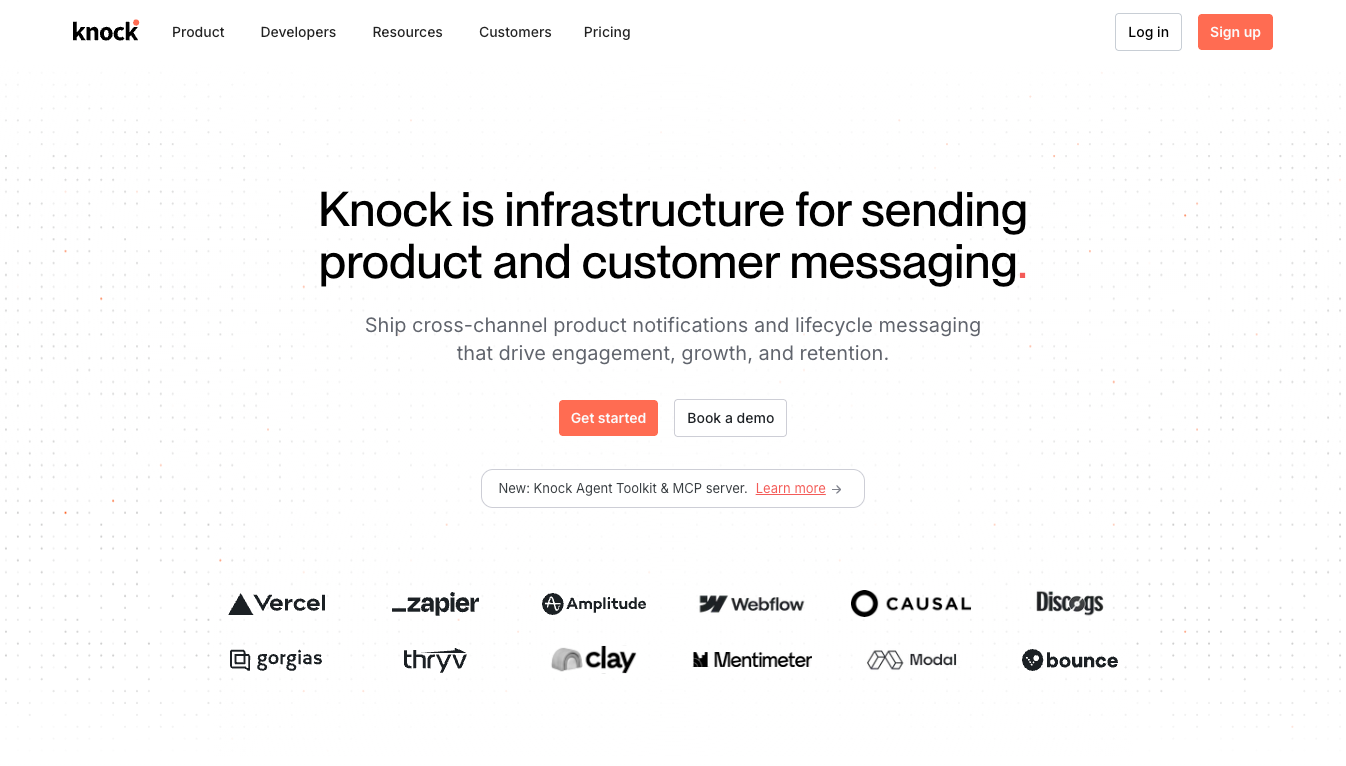
Knock is a notification infrastructure platform built with developers in mind, offering complete control over multi-channel messaging, including in-app messaging. Developers can access comprehensive docs, SDKs, and pre-built, fully-customizable components to build messaging experiences that feel native to the product, and then give marketing and product teams full control to edit messages, adjust targeting, and publish campaigns.
Pros
- Pre-built React components including notification feeds, banners, cards, toasts, and more.
- Build-your-own headless components for complete design control.
- Visual workflow builder for complex notification logic.
- Dynamic template editor for previewing in-app messaging.
- Self-service copy updates so non-technical teams can publish without deploying.
- True multi-channel orchestration across in-app, email, push, SMS, and chat apps (Slack, Teams, WhatsApp).
- Developer-first APIs with comprehensive documentation.
- Built-in preference management and subscription handling.
Cons
- Requires some initial technical set up for custom components and audience targeting.
- Teams must integrate other analytics tools to pass relevant user data into Knock.
Best for
Engineering teams building production-grade applications that need full UI control and high-quality user experience, and marketing and product teams that need full control over messaging to current users.
Knock Pricing
Free tier available, usage-based pricing starting at $250/month for 50k notifications
Pendo
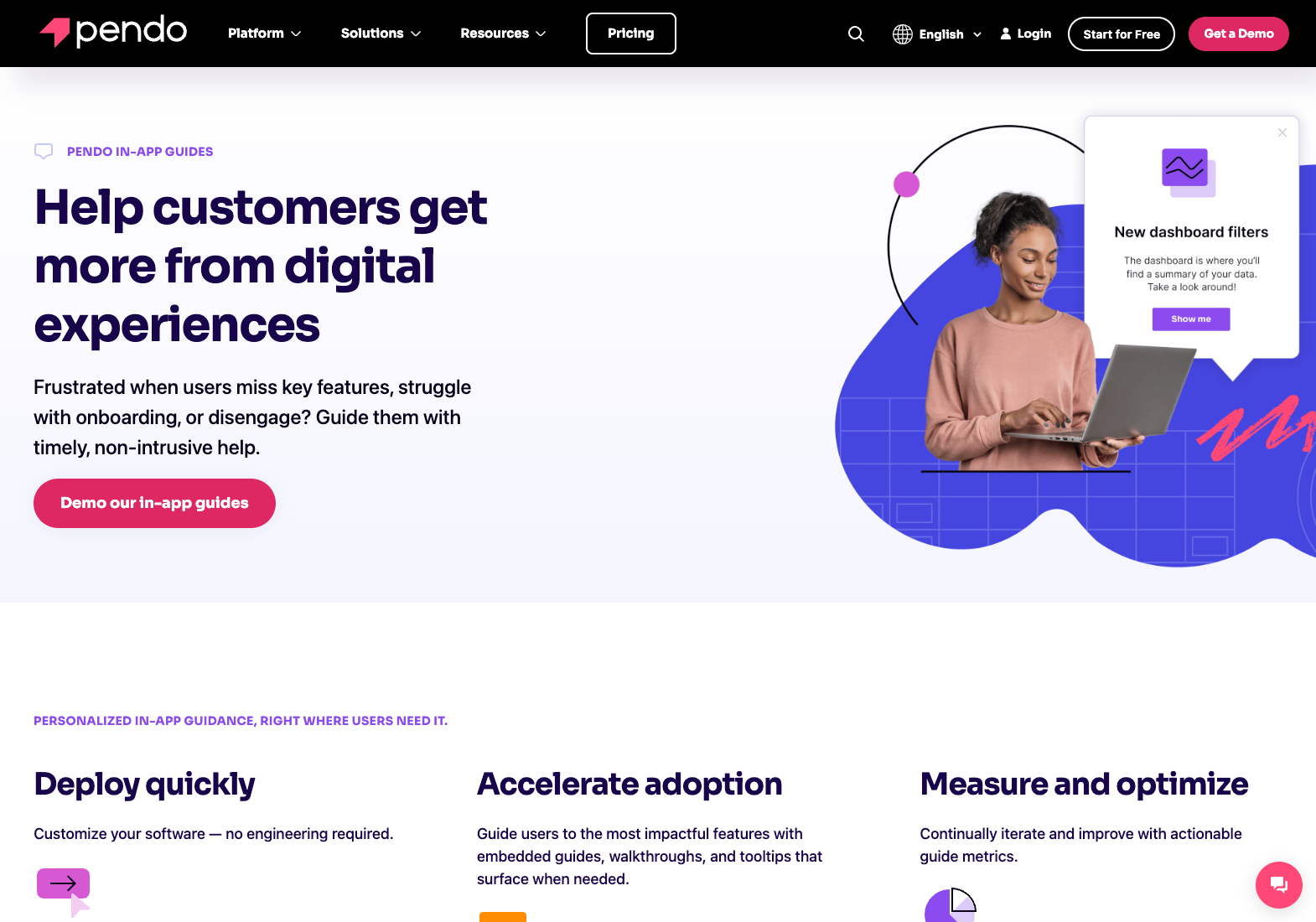
Pendo is a product analytics platform that includes in-app messaging for user onboarding and feature adoption. Their messaging capabilities are tightly coupled with their analytics features.
Pros
- Strong product analytics integration.
- Visual guide builder for non-technical users.
- User segmentation based on product usage.
- No-code implementation for basic messages.
Cons
- Limited to web applications only.
- No support for multi-channel notifications.
- Cannot handle transactional notifications.
Best for
Product teams focused on user onboarding and feature adoption in web applications. Not suitable for teams needing cross-channel notification orchestration.
Pendo pricing
Custom pricing starts around $20,000/year for small teams.
Chameleon
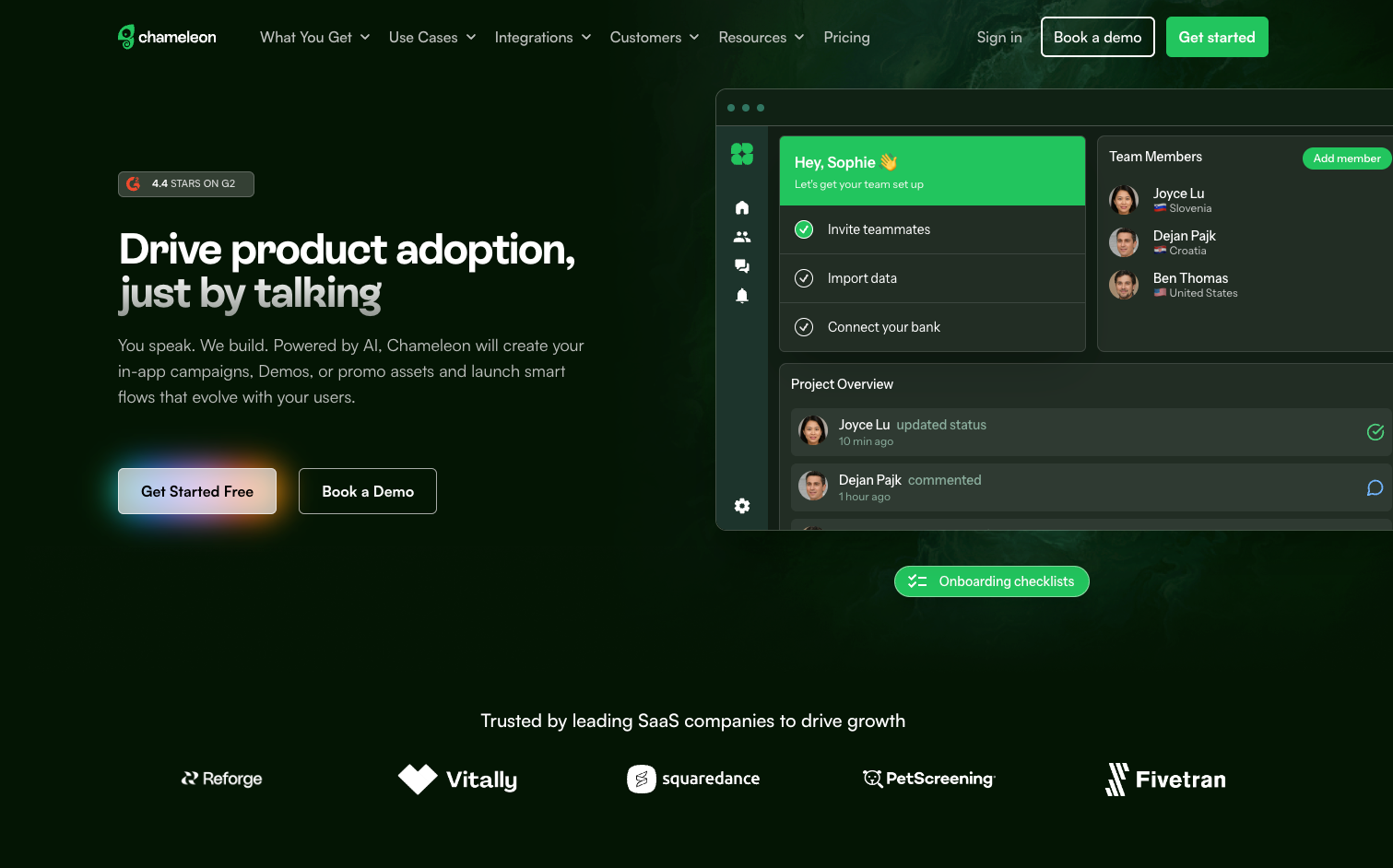
Chameleon is a product adoption platform that includes in-product messaging for user onboarding. It focuses on no-code tools for product teams.
Pros
- No-code visual builder.
- Good for product tours and tooltips.
- Integrates with analytics tools.
Cons
- Limited to in-app experiences only.
- No API for developer control.
- Cannot handle transactional notifications.
- No cross-channel capabilities.
Best for
Product managers creating onboarding flows without engineering support. Not suitable for engineering teams building notification infrastructure.
Chameleon pricing
Pricing starts at $279/month for up to 2,000 MAU.
Braze
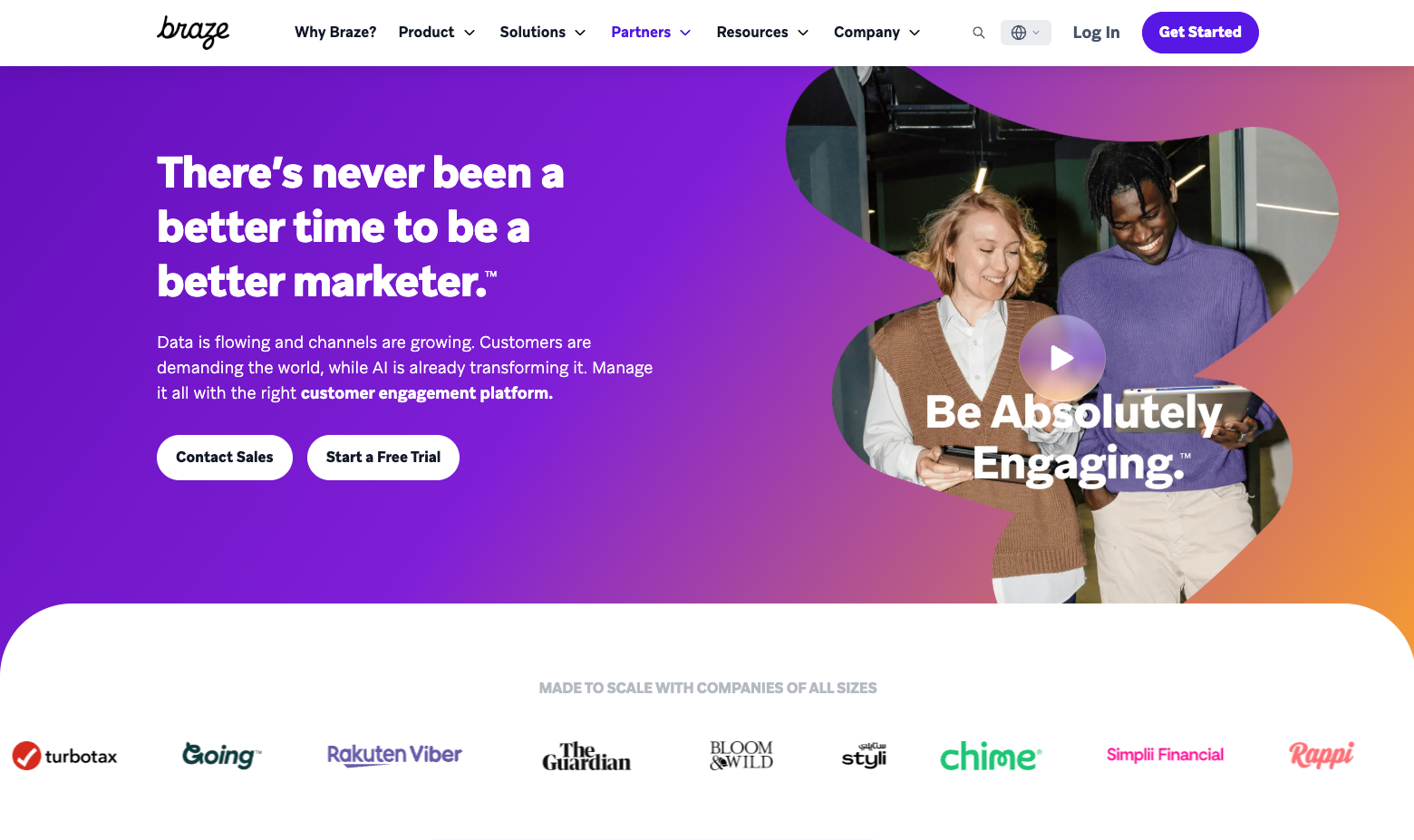
Braze is a customer engagement platform that offers in-app messaging as part of its broader marketing automation suite. The platform focuses on campaign-based messaging and user segmentation for consumer brands.
Pros
- Sophisticated segmentation and personalization capabilities.
- A/B testing and analytics built-in.
- Strong mobile SDK support.
- Integration with marketing analytics tools.
Cons
- Complex implementation requiring significant technical resources.
- Primarily designed for marketing teams, not developers.
- Limited support for transactional notifications.
- No pre-built UI components for web applications.
Best for
Large B2C companies with dedicated marketing teams that need campaign-based messaging. Less suitable for SaaS products requiring native in-product messaging and real-time transactional notifications.
Braze pricing
Enterprise pricing typically starts at around $50,000/year.
Userpilot
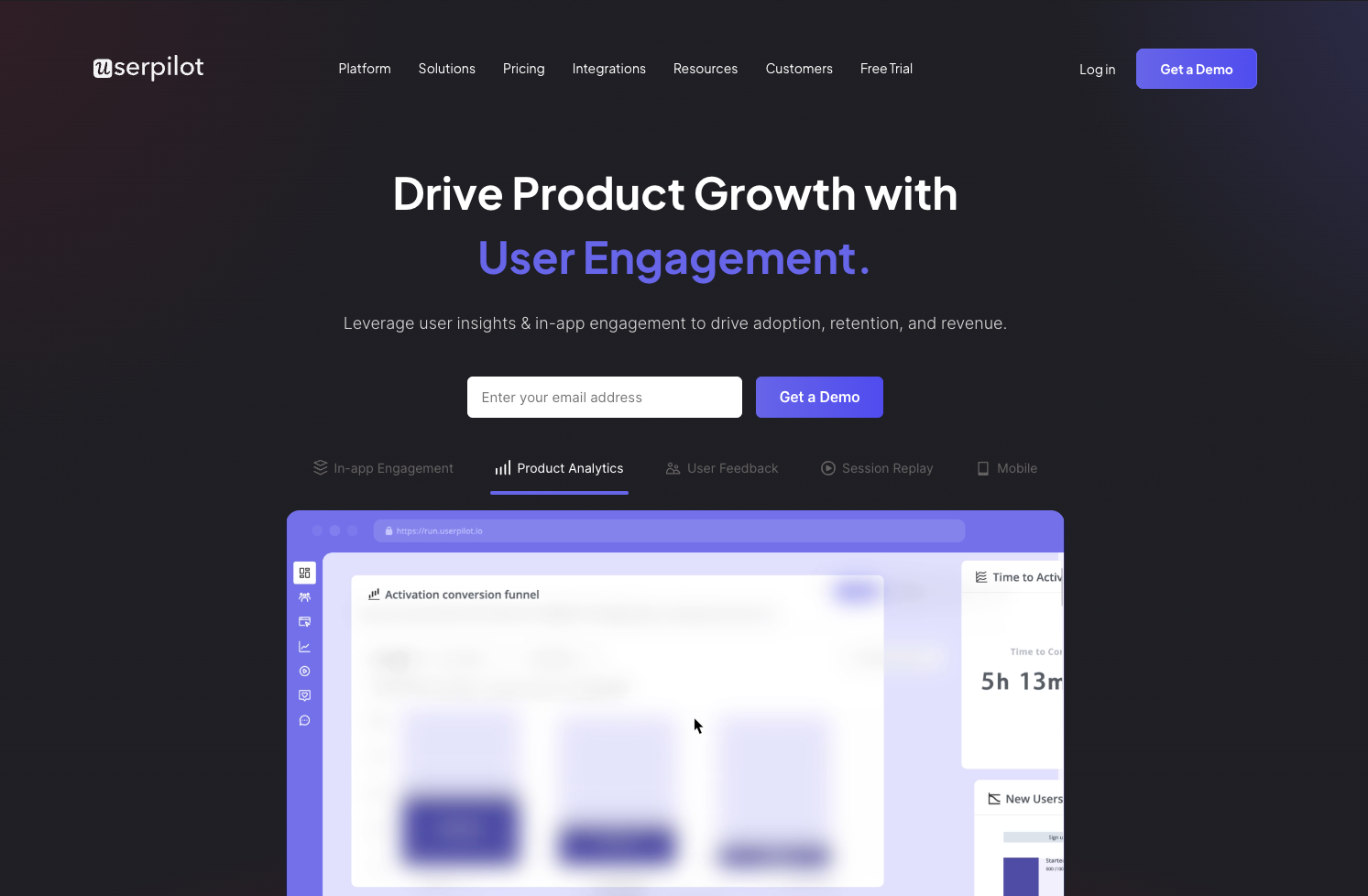
Userpilot is a product growth platform that enables product teams to create in-app experiences without code. It focuses on user onboarding, feature discovery, and collecting user feedback through surveys and NPS.
Pros
- No-code visual builder with templates.
- Built-in analytics for tracking flows.
- Native NPS and survey tools.
- Goal tracking and A/B testing features.
Cons
- Web-only, no mobile app support.
- No API for developer control.
- Cannot handle transactional notifications.
- Limited to overlay messages and tooltips.
- No multi-channel messaging capabilities.
Best for
Product teams at B2B SaaS companies looking to improve activation and feature adoption without engineering help. Not suitable for developer-controlled notifications or multi-channel use cases.
Userpilot pricing
Pricing starts at $249/month for up to 2,500 MAU, with higher plans jumping to $799/month.
Appcues
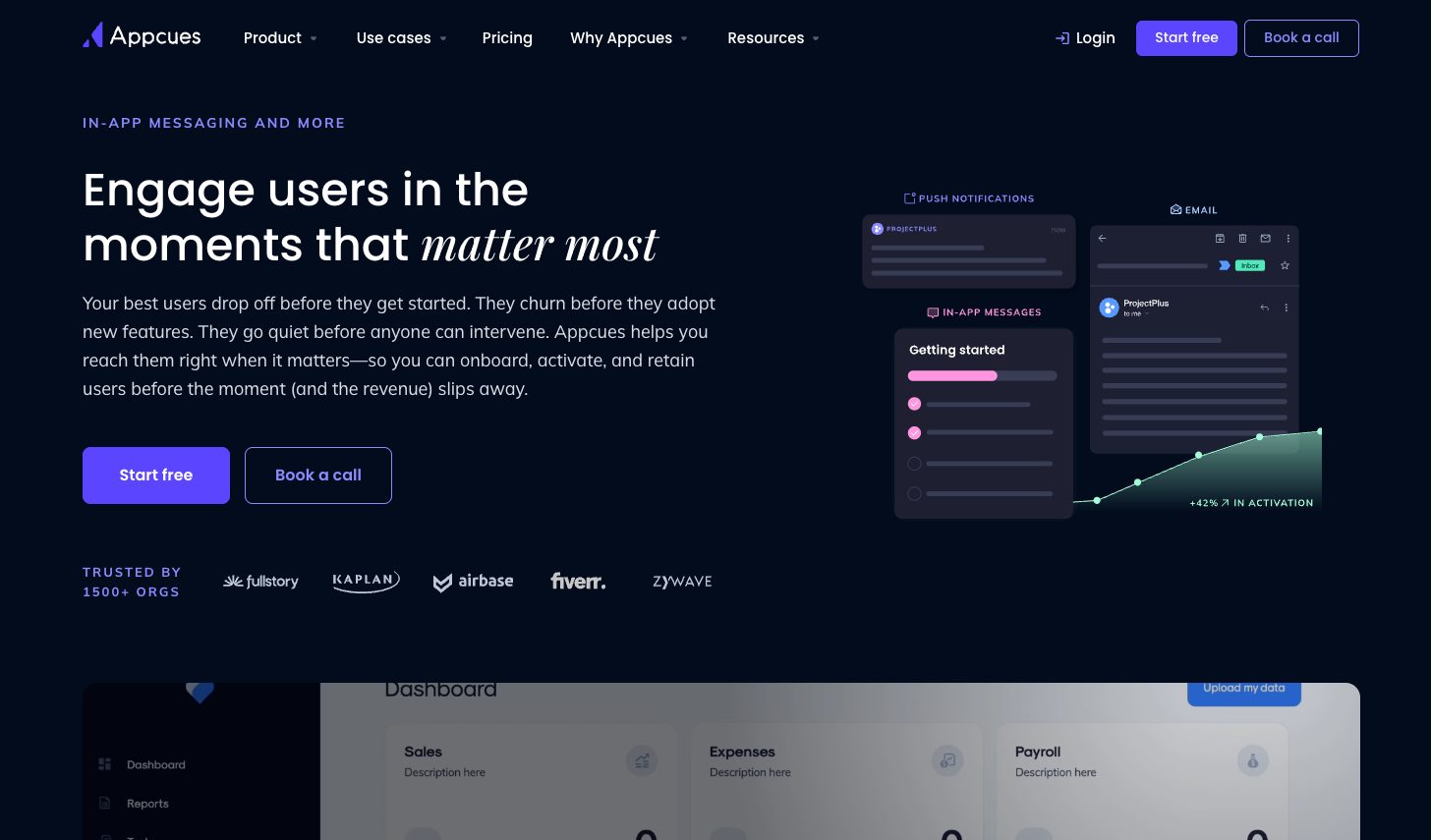
Appcues is a product adoption platform that enables product teams to create in-app messaging experiences without code. The platform focuses on user onboarding flows, feature announcements, and product tours through overlay messages.
Pros
- No-code flow builder for product teams.
- Good integration with analytics platforms.
- Pre-built templates for common use cases.
- Visual targeting and segmentation tools.
Cons
- Limited to web applications only, no mobile support.
- Cannot handle transactional or time-sensitive notifications.
- No API access for developer-controlled messaging.
- No multi-channel capabilities beyond in-app overlays.
- Expensive for the limited feature set.
Best for
Product teams at B2B SaaS companies who need to create onboarding flows and feature announcements without engineering resources. Not suitable for teams needing developer-controlled notifications or multi-channel messaging.
Appcues pricing
Pricing starts at $249/month for 2,500 MAU, quickly escalating to $879/month for 10,000 MAU.
OneSignal

OneSignal provides push notification services with basic in-app messaging capabilities added as an extension. The platform primarily serves mobile app developers.
Pros
- Easy setup for mobile push notifications.
- Basic segmentation features.
- Multi-platform SDK support.
Cons
- Limited workflow capabilities for complex notification logic.
- No pre-built components for web applications.
- In-app message inbox has limited customization and is not truly real-time.
- Basic preference management.
- Primarily focused on marketing messages, not transactional.
Best for
Mobile app developers who need simple push notifications with basic in-app messaging. Teams building SaaS products will find the web support lacking.
OneSignal pricing
In-app messaging only available on Growth plan starting at $9/month before escalating to custom pricing.
MoEngage
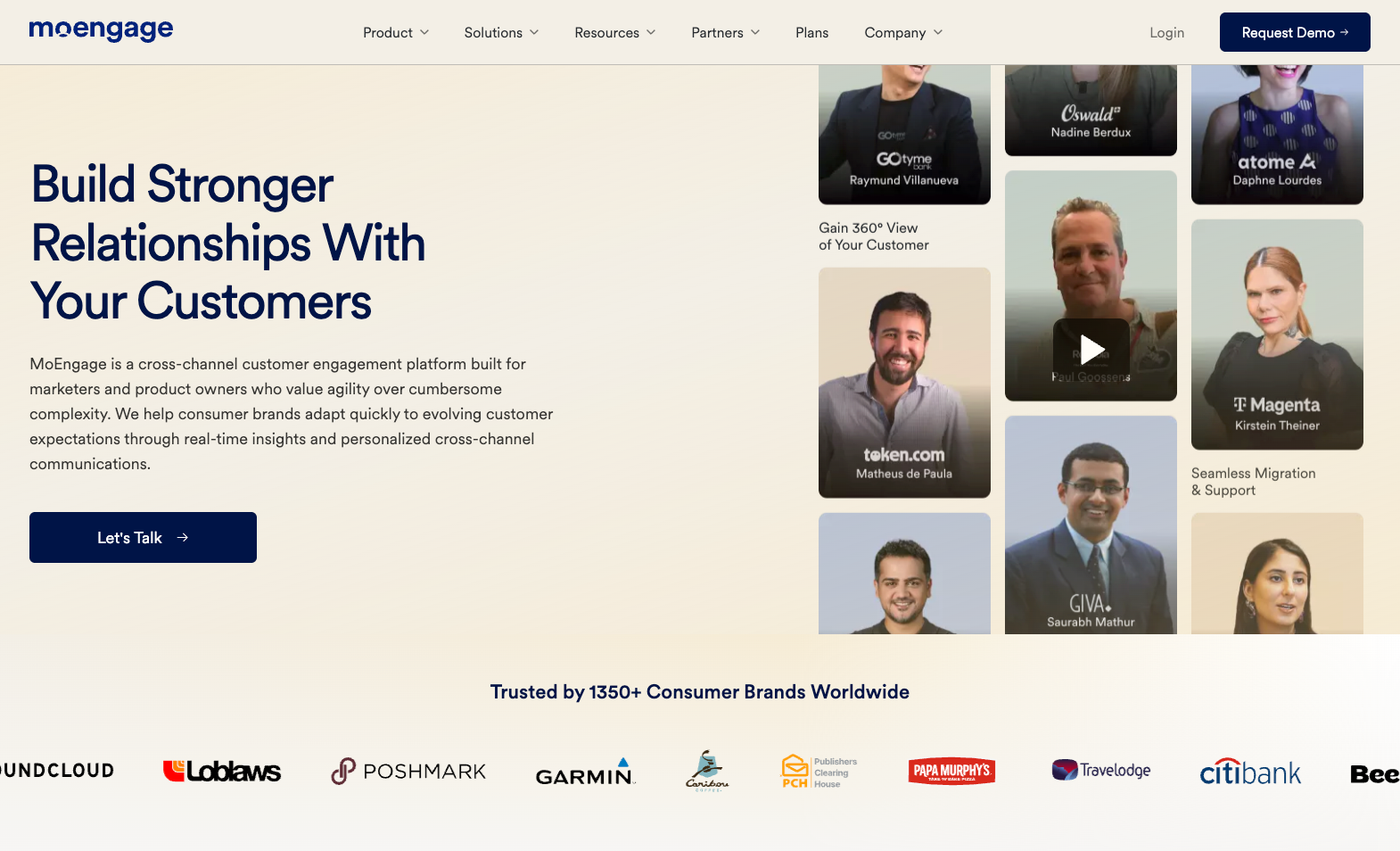
MoEngage is a customer engagement platform focusing on mobile-first messaging and analytics. It provides campaign management tools for consumer apps.
Pros
- AI-powered optimization features.
- Journey builder for multi-step campaigns.
- Good mobile analytics integration.
- Predictive segmentation.
Cons
- Mobile-centric with limited web support.
- No developer-friendly APIs for custom implementations.
- Lacks real-time transactional messaging capabilities.
- No pre-built React components.
Best for
B2C mobile apps focused on marketing automation. Not ideal for B2B SaaS products requiring developer-controlled notifications.
MoEngage pricing
Enterprise pricing typically starts around $24,000/year.
CleverTap (formerly Leanplum)
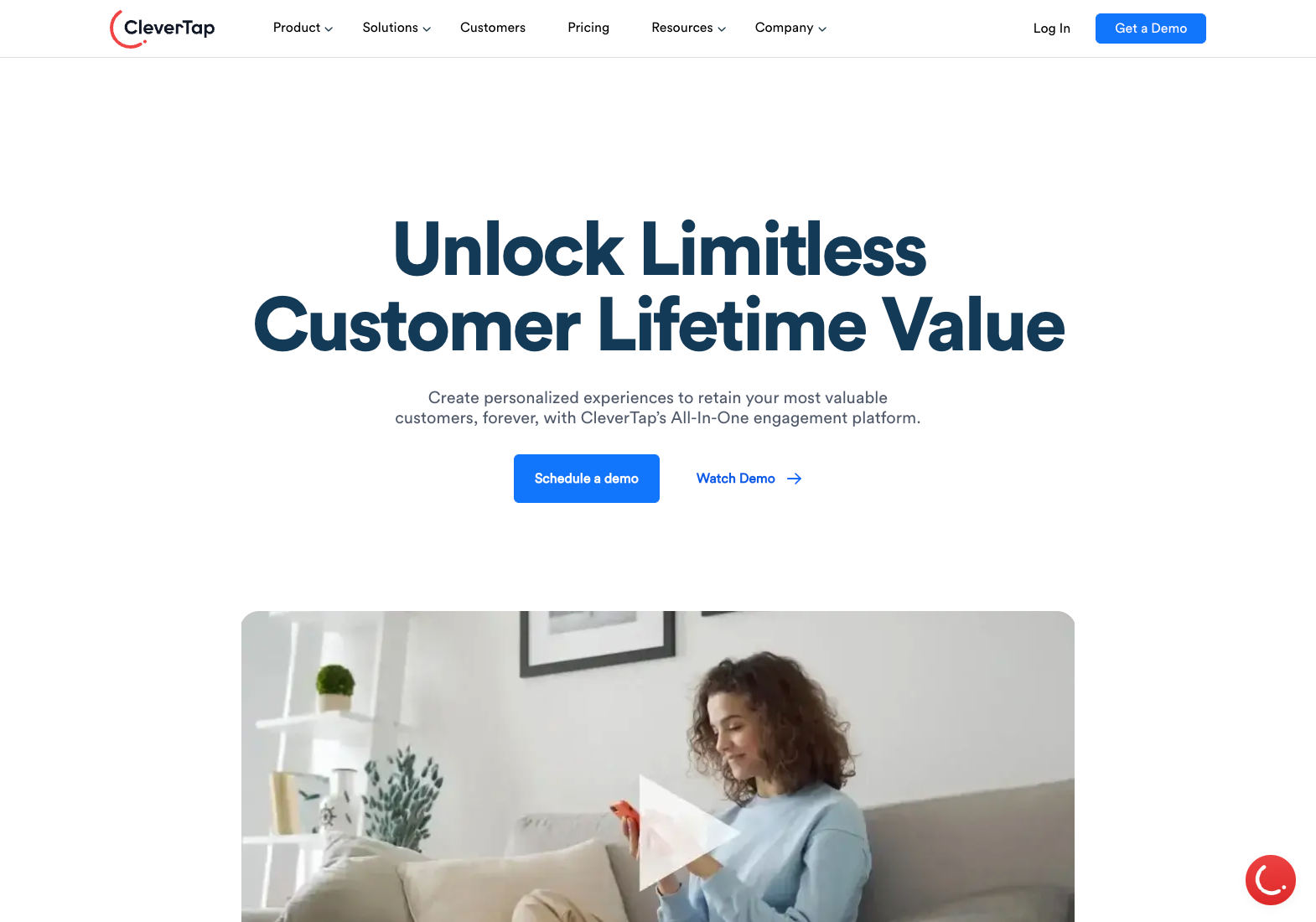
CleverTap acquired Leanplum to expand its mobile marketing automation capabilities. The combined platform focuses on consumer app engagement through campaign-based messaging.
Pros
- Unified platform after acquisition.
- Strong mobile A/B testing features.
- Predictive analytics capabilities.
- Geolocation-based targeting.
Cons
- Mobile-only focus with no web application support.
- Complex setup requiring extensive SDK integration.
- No support for transactional notifications.
- Limited developer documentation.
Best for
Consumer mobile apps with large marketing teams. Not suitable for B2B SaaS products or developer-led implementations.
CleverTap pricing
Enterprise pricing typically starts around $40,000/year.
How to choose the right in-app messaging tool
The key to choosing the right tool is finding a solution that aligns with your technical requirements, scales with your growth, and enables teams to iterate and launch messaging experiences quickly.
Knock stands out as the most comprehensive solution, offering enterprise-grade scalability with developer-friendly implementation. Its pre-built, native components accelerate development without bloating performance, and the platform's focus on both developer experience and non-technical user accessibility makes it ideal for teams that need to get started and iterate quickly.
For teams seeking alternatives, Pendo, Chameleon, Appcues, and Userpilot excel as product adoption platforms, best suited for teams prioritizing user onboarding flows, feature tours, and behavior analytics over robust notification infrastructure. These tools trade technical flexibility for no-code simplicity, and will fall short for organizations who need to reliably send in-app messaging at scale.
Braze, MoEngage, and Clevertap serve as full marketing automation suites, focusing on campaign management and customer journey orchestration. While powerful for marketing-led initiatives, they require significant implementation effort and carry enterprise pricing that may exceed the needs of product-focused teams.
OneSignal meets basic in-app messaging needs for mobile applications, such as pop-ups, tooltips, and surveys, though it lacks the ability to support more advanced components and logic.
Increase in-app engagement with Knock
Knock's combination of powerful APIs, flexible workflows, and production-ready components makes it the most versatile choice for teams serious about in-app messaging.
Not only does it support in-app messaging use cases like banners, modals, and pop-ups with full control over targeting, prioritization, and activation, but developers can implement real-time, stateful inboxes and dynamic notification feeds, too.
And for teams building comprehensive notification systems, Knock integrates with more than 25 messaging providers across email, push, SMS, and chat apps, so you can reach your users on any channel.
If you'd like to try it out, you can sign up for a free account or chat with our team. 👋